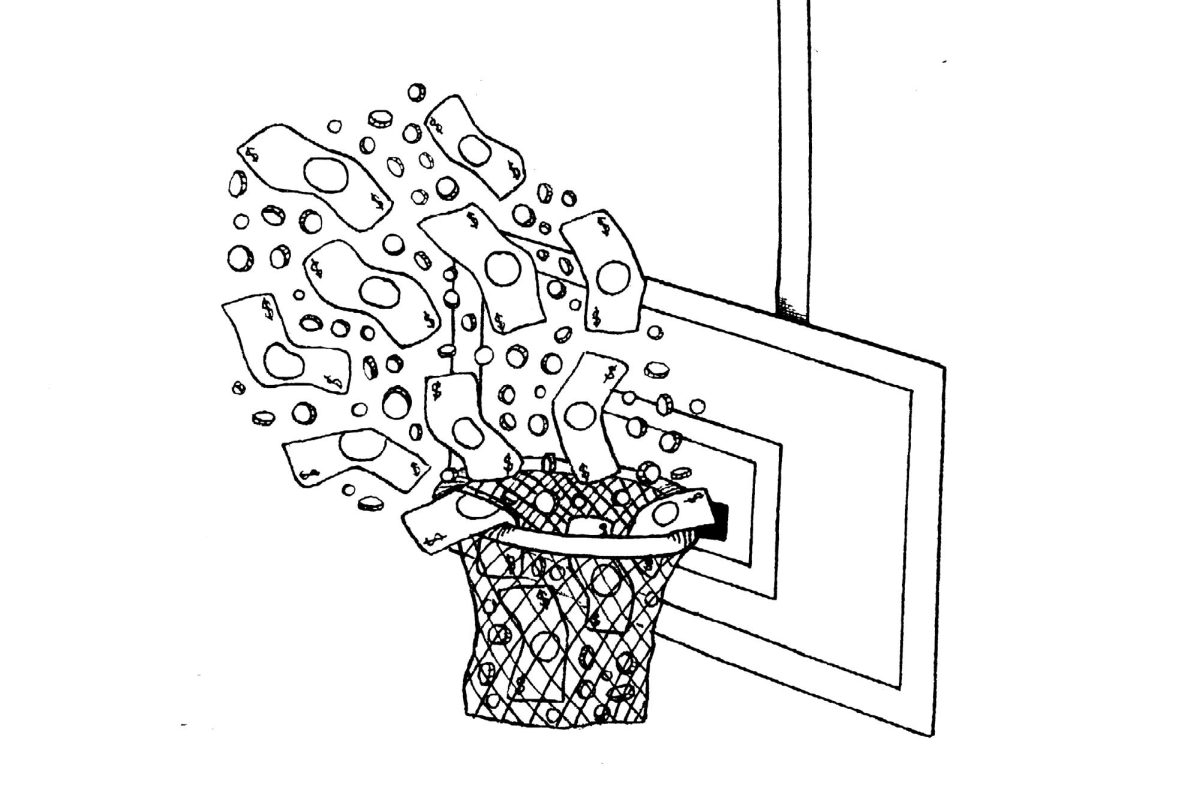Though the Medical Faculty Associates can get lost in the mix of University-related enterprises, its network of doctors from obstetricians and gynecologists in Maryland to podiatrists in Dupont Circle tends to patients across the D.C. region. But as the MFA serves the health care needs of the DMV, its own financial health – with a staggering $200 million in debt to GW – is in critical condition.
Yes, you heard that right. In the past two years, GW has doled out $200 million in loans to the MFA, which is financially independent of the University, to keep the physician practice afloat as its revenue fell further and further during the COVID-19 pandemic. But as officials worked to bail out the MFA, they simultaneously enforced a period of austerity on students, faculty and staff. If GW was willing to cover the MFA’s tab, why couldn’t it instead allocate the same amount of funds to smaller projects that would yield greater improvements to everyday life within its own community?
To be clear, the MFA is vital to Foggy Bottom, the District and the DMV with or without its financial problems. MFA doctors provide regular treatment at the GW Hospital with routine appointments and emergency care for patients, including a senator’s hospitalization last week. The network’s members teach at the School of Medicine and Health Sciences, preparing students for careers in the medical and health care fields.
Beyond the GW Hospital, the MFA’s more than 2,150 employees provide health care services at 112 locations around the DMV. The MFA will also help run the Cedar Hill Urgent Care, the first urgent care clinic in Ward 8, and the larger Cedar Hill Medical Center hospital complex once it opens in 2024. As we’ve noted previously, the multimillion dollar investment in the facilities represents a massive step forward in addressing the health of communities east of the Anacostia River, where the MFA’s physicians and practitioners will fix broken bones, run lab tests and treat traumatic injuries.
Still, the MFA’s benefits can’t change the reality of its financial situation. The MFA’s net assets have fallen by $91.1 million since 2019, and its losses this fiscal year will range between $55 million to $65 million – so much for officials’ plans for the MFA to break even by the end of June. To keep the floundering health care network afloat, GW loaned it $50 million in March 2021 before extending it to $140 million in October that year. In December 2022, the MFA received a $15 million loan from the University, and officials approved yet another $45 million loan in January. Even with measures to restructure the MFA’s financial relationship with GW Hospital owner Universal Health Services to cut costs and raise revenue, it’s unclear what impact these measures have had on the MFA’s finances.
We’re not financial experts. But it doesn’t take a few classes in Funger or Duquès halls – let alone a degree – to recognize that the MFA’s finances have been in serious trouble and are putting a strain on GW. So allow us to put that $200 million worth of loans from the University into perspective.
Aside from variations in GW’s cost of tuition, $200 million would give 805 undergraduate students a free, four-year education at the University. For fans of the newly renovated Thurston Hall, $200 million would cover the estimated cost of its renovations 2.5 times over. And if you can’t get enough of the Thurston or Shenkman dining halls, $200 million equals three semesters of free unlimited dining for GW’s current student population.
GW continued to throw money at the MFA despite reeling from its own estimated $180 million budget shortfall during the pandemic. Officials responded to that shortfall by suspending most capital projects and hirings, freezing salaries and laying off staff. The University saved $32 million doing the latter but cost 339 people in IT offices, the career center and event departments their jobs in 2020.
For better or for worse, GW hasn’t exercised that tough-love decision making when it comes to the MFA. As much as it’s critical to the health and well-being of the region and GW’s mission, the MFA has gotten – and continues to receive – special treatment. While massive layoffs aren’t necessarily the answer, officials’ only solution to the MFA’s problems seems to be pouring more money into a failing enterprise. Perhaps officials’ math adds up on paper, but after failing to meet its initial target of breaking even by this June, how will the MFA make up so much money in so little time to recover its losses by the end of the next fiscal year per officials’ plans?
Whether every dollar the MFA receives from GW represents an act of accounting wizardry or a direct cut somewhere else on campus, it certainly can feel like the latter when the University’s day-to-day operations are marred with maintenance and facilities issues. Just ask the students without hot water in their residence hall, the student organizations calling for more affordable access to Plan B in GW’s new contraceptive vending machine or overworked facilities and IT staff triaging crisis after crisis what they’d do with $200 million.
GW may not be slashing its own budget to spot the MFA a few million dollars, but if it can raise enormous sums of money to keep the organization limping along through years of deficits and debts, the University can surely spare some change for its own community.
The editorial board consists of Hatchet staff members and operates separately from the newsroom. This week’s staff editorial was written by Opinions Editor Ethan Benn and Contributing Opinions Editor Julia Koscelnik, based on discussions with Research Assistant Zachary Bestwick, Sports Editor Nuria Diaz, Managing Editor Jaden DiMauro, Culture Editor Clara Duhon, Design Editor Grace Miller and Contributing Social Media Director Ethan Valliath.


